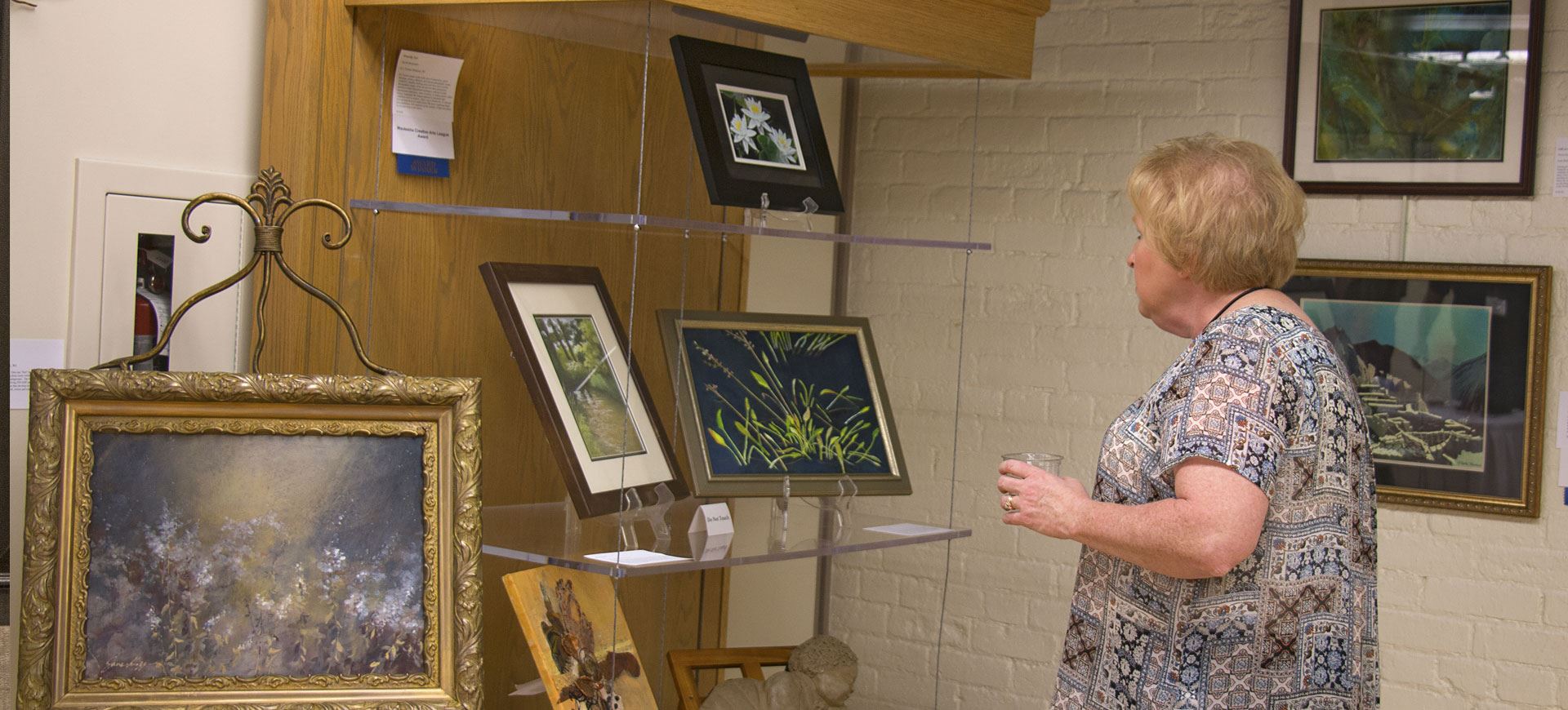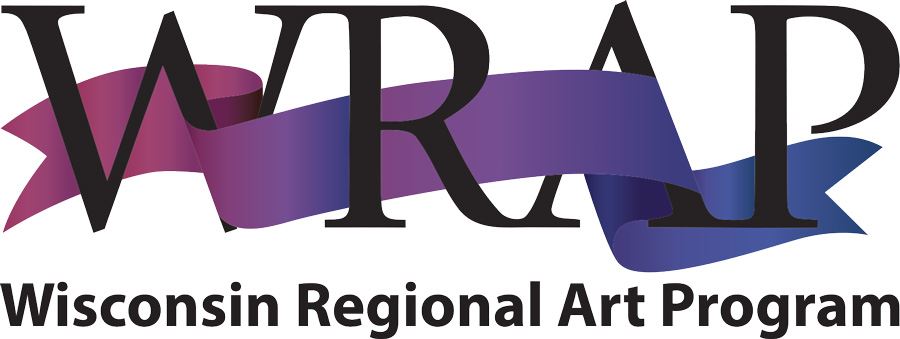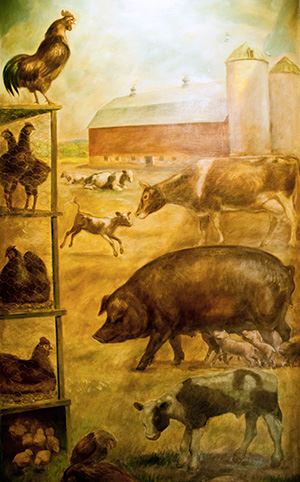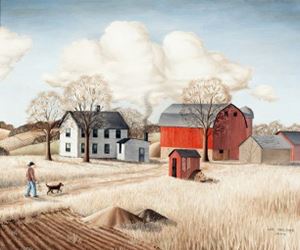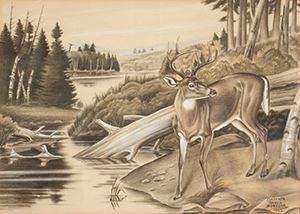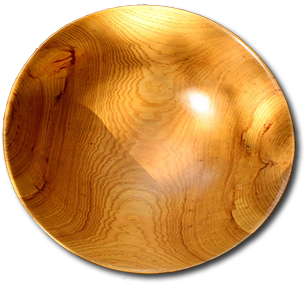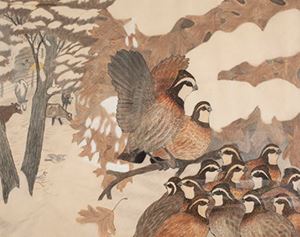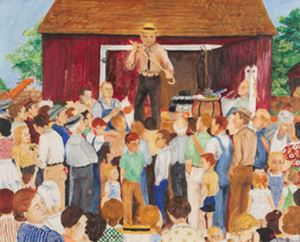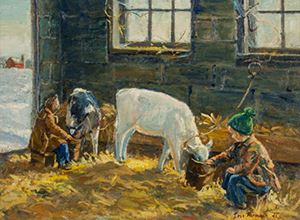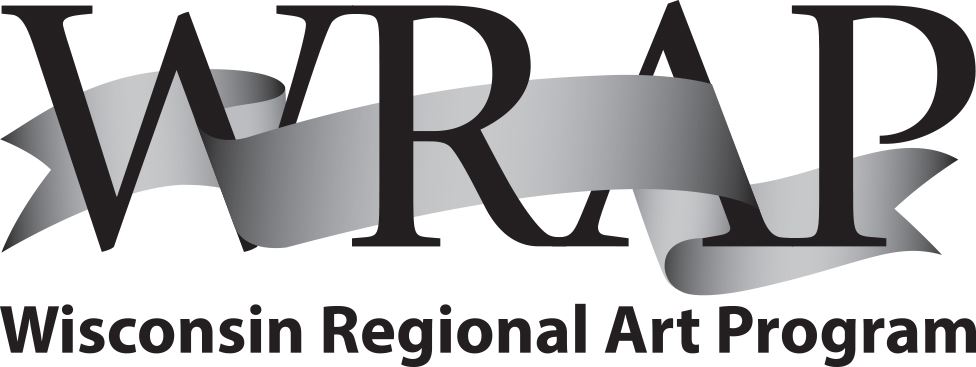 | ASSOCIATION of Wisconsin Artists1954-2025 Celebrating 71 Years! |
Wisconsin Regional Art Program (WRAP) - History
|
HISTORY The Wisconsin Idea, extending the reaches of the university throughout the state, inspired the original Rural Arts Program. In 1936, an era of rapid social change, the UW–Madison College of Agriculture began a bold artistic experiment: using the arts to expand the cultural growth and knowledge of rural Wisconsin. Rural sociologist John Rector Barton and Chris L Christianson, the dean of the college, envisioned what would become the Regional Art Program. They hired John Steuart Curry, a well-known landscape painter, to serve as the first-ever “artist in residence” at any college. Curry was part of a famed trio of American Regionalist artists, alongside Grant Wood and Thomas Hart Benton. One of his responsibilities was to be a mentor for the painters and craft workers brought together in the newly formed Rural Art Program (which became the Wisconsin Regional Art Program and is now administered by the Association of Wisconsin Artists). Founded as an arts-based outreach program of the College of Agriculture to foster cultural growth, independence, and self-improvement in rural Wisconsin artists, the Rural Art Program’s adult, noncredit students would be a group of largely self-taught artists—teachers, mail carriers, blacksmiths, farmers, and homemakers residing in various small communities.
Informal field visits offering supportive critiques and instruction around the state culminated annually in what was then called the Rural Art Exhibit. |
The first exhibition, at the Memorial Union, showed the work of 30 artists from 17 counties. By 1947 there were 105 exhibiting artists. (Today there are nearly 200 artists in the state exhibit, selected from more than 600 artists who participate in local WRAP exhibits and workshops). James Schwalbach, host of WHA’s popular “Let’s Draw” radio program, joined the staff in 1945 and helped expand the program as a part of his work with the College of Agriculture and UW–Extension. Administration for the Regional Art Program moved to UW-Extension with the retirement of Aaron Borhod and the suspension of the College of Agriculture artist-in residence program. Wisconsin sculptor Mary Michie directed the Rural Art Program for UW-Extension, followed by artist Ken Kuemmerlein and artist Leslee Nelson. The administration of what is now known as WRAP was first shared by UW-Extension and the UW–Madison Division of Continuing Studies, and then resided entirely within Continuing Studies. In 2020 the Division of Continuing studies eliminated their support of WRAP due to budget reductions. The Association of Wisconsin Artists assumed the administration of WRAP and is now affiliated with the UW Department of Art. For more about the Wisconsin Idea in the Arts read “Looking Back to Look Forward: The Wisconsin Idea in the Arts,” an essay by Maryo Gard Ewell which appeared in the Summer/Fall 2020 issue of the Wisconsin People & Ideas magazine reproduced with the permission of the Wisconsin Academy of Sciences, Arts, and Letters. ALUMNI Literally thousands of Wisconsin artists have participated in WRAP through the years. Most participants are interested in personal growth and transformation through the arts, but some who may have had their first experiences of public recognition with WRAP have gone on to develop professional careers. Some better-known Wisconsin artists who have exhibited their work with WRAP include: Lois Ireland Zwettler, Waunakee Lois Ireland exhibited 23 paintings through the Rural Arts Program between 1943 and 1948, starting when she was just 14 years old. (Curry discovered the young Waunakee artist’s paintings on display at a Westport steakhouse and became a supporter and mentor to her.) After graduating from high school she went on to study art at UW–Madison and the Arts Student’s League in New York, and developed a career as a regional landscape painter. As the art world turned away from landscape and toward abstract expressionism, Lois turned away from her art, married, and focused on a career as a wife and mother until the 1970s, when she again picked up her brushes. In recent years she has been rediscovered. She had a solo exhibition at the Museum of Wisconsin Art in 2007, and her work was featured in the exhibition Lois Ireland: Wisconsin Pastorale, at the Madison Museum of Contemporary Art. Clarence Boyce Monegar, Black River Falls Clarence Boyce Monegar loved the Wisconsin landscape and knew it well. A HoChunk artist also known as Red Arrow, as a child he was encouraged by his mother, who has her own artistic talent in weaving, designing, and decorating baskets. Clarence’s art career did not start until 1942, after the death of his young wife to tuberculosis. His grief sent him into depression and drinking, and eventually to jail. There he started to draw and paint wild animals in natural settings from memory. Supporters of his creative work brought him to the attention of Curry, who encouraged him and taught him lithography. Monegar went on to get more artistic training, and to make his living as a painter in oils and watercolors, and a printmaker with artworks focusing on wild life themes, until his death in 1969.
Harry Nohr was a rural postman in Mineral Point, a conservationist responsible for Gov. Dodge Park in Iowa County, and a nationally recognized artist. He was first “discovered” by and encouraged to exhibit with the Rural Arts Program. Harry created and mastered a specialized technique for creating wooden bowls, capturing the essence of the wood from which they were made. He was recognized by UW–Madison for his “creative work and for the many contributions he made toward a broader community interest in art.” In 1975 he was elected vice president of the Wisconsin Academy of Sciences Arts and Letters. Upon his death in 1977, UW–Platteville received a gift of $300,000 from the Nohr Family Estate, which made it possible to create a professional exhibition space for the expansion and enhancement of the current visual arts program at UW–Platteville.
Nick Engelbert was born in 1881 in Pravaljie, Austria. After serving in the Austro-Hungarian army for two years, he fled Europe and eventually settled in the United States and married. He and his wife bought a small 7-acre farm just outside the little village of Hollandale where they raised 4 children. Starting in the mid-1930’s while recovering from a sprained ankle, Nick became known for creating concrete sculptures. By the 1950’s his entire yard was transformed into an artistic landscape of more than 40 concrete sculptures, and he had decorated the entire exterior of his small farmhouse with a colorful mosaic of concrete embellished with stones, shells, glass shards, and fragments of ceramic dinnerware and porcelain figurines. In 1971, when he was in his 70s, Nick was given a set of oil paints. He began to paint and attend Rural Art Program gatherings in nearby Mt Horeb.
Frank Lloyd Wright likened this work to a Japanese print. Thorp was drawn to nature and to art from his earliest years, despite no memories of others in his family pursuing visual art. He farmed in Iowa and Wisconsin for eleven years and entered his first Rural Art Exhibit while he was a tenant farmer in Baraboo. He sold these two works to the Permanent Collection but found it hard to make time for art while scraping out a living. Mostly he gave his drawings away. He considered nature to be his principle guide and teacher.
Born in Milwaukee but raised on a farm, Joan Arend received early attention in RAP/WRAP, winning recognition with this painting in 1945. Joan trained as a book illustrator at the Layton School of Art in Milwaukee. In 1953 she moved to Alaska with her husband and embarked on what became a career painting native Alaskan children. She wrote and illustrated several coloring books that were popular with Alaska Natives because the images were so lifelike.
The first Rural Art Exhibit was held at the Memorial Union during Farm and Home Week in 1940. Under the guidance of John Steuart Curry, the exhibit grew rapidly, expanding from 30 nonprofessional artists in 1940 to over 100 by 1947. The energy and enthusiasm of Curry’s successor, Aaron Bohrod, and the WRAP directors, James Schwalbach, Ken Kuemmerlein, Leslee Nelson, Helen Klebesadel, Liese Pfeifer, and Angela Johnson, along with the ongoing support of the Association of Wisconsin Artists (formerly the Wisconsin Regional Artists Association), has ensured that exhibits and workshops have remained cornerstone activities for nonprofessional artists throughout the state for 80 years. The Wisconsin Regional Arts Program (WRAP) Today The Wisconsin Idea signifies a general principle: that education should influence people’s lives beyond the boundaries of the classroom. This principle inspired the original Rural Arts Program that has evolved into the WRAP of today and now serves rural and urban artists. Wisconsin remains the only state with a program of this kind. Throughout our regional WRAP’s, more than 600 artworks are produced and shown by participating artists. From these, nearly 200 receive awards and are selected to be displayed in the Annual State Art Exhibit. While the exhibit artists do not consider themselves to be professional artists, that in no way reflects on the quality of the artwork. Local WRAP exhibits are judged by professional artists who select artworks to receive state awards and honorable mentions. Artists who receive a state award are invited to show their award-winning artwork in the State WRAP Exhibit that takes place every August through September and culminates in the State Conference and awards ceremony. For an artwork to be included in the state art exhibit, it must have been created in the past 2 years. There are no restrictions about where the artist is from, and works can be sold. Also included in the State Exhibit is artwork from talented young artists in the WRAP-Teen (formerly STAMP) and WRAP-Kids (formerly Bridging Generations) programs, as is the “Tiny Treasures” fundraising exhibit, made up of small matted images measuring 2 1/2 by 3 1/2 inches in size. The proceeds from this fundraising competition support a color catalog for the WRAP exhibit, along with other AWA publications. Anyone age 18 and older interested in expanding their creative growth in the visual arts can participate in WRAP exhibits and workshops, as long as they do not consider themselves to be professional artists. |
Benefits of Biochemical Research”c. 1941-43. Oil and tempera on canvas. Collection of Public Art at UW–Madison. Related links:
Lois Ireland, The Homestead, c. 1944. Oil on canvas, 34¾ x 28½ inches. Collection of the Wisconsin Regional Art Program, UW–Madison
Clarence Boyce Monegar, The Watering Hole, c. 1942. Watercolor. Collection of the Wisconsin Regional Art Program, UW–Madison.
Harry Nohr, American Studio Craft Hand Carved Wooden Bowl, c. 1960. Birch wood.
Walter Thorp, Covey of Quails, c. 1941. Crayon and pencil. Collection of the Wisconsin Regional Art Program, UW‑Madison.
Joan Arend (Kirkbush), Wisconsin Farm Auction. Oil, 1945.
Iris Furman Tellefson, charter member, Rural Arts Program (1940). Feeding Time. Oil painting, c. 1942.
Lois Ireland, Homecoming, c. 1945. Oil on canvas, 29½ x 35½ inches. Collection of the Wisconsin Regional Art Program, UW–Madison. |
